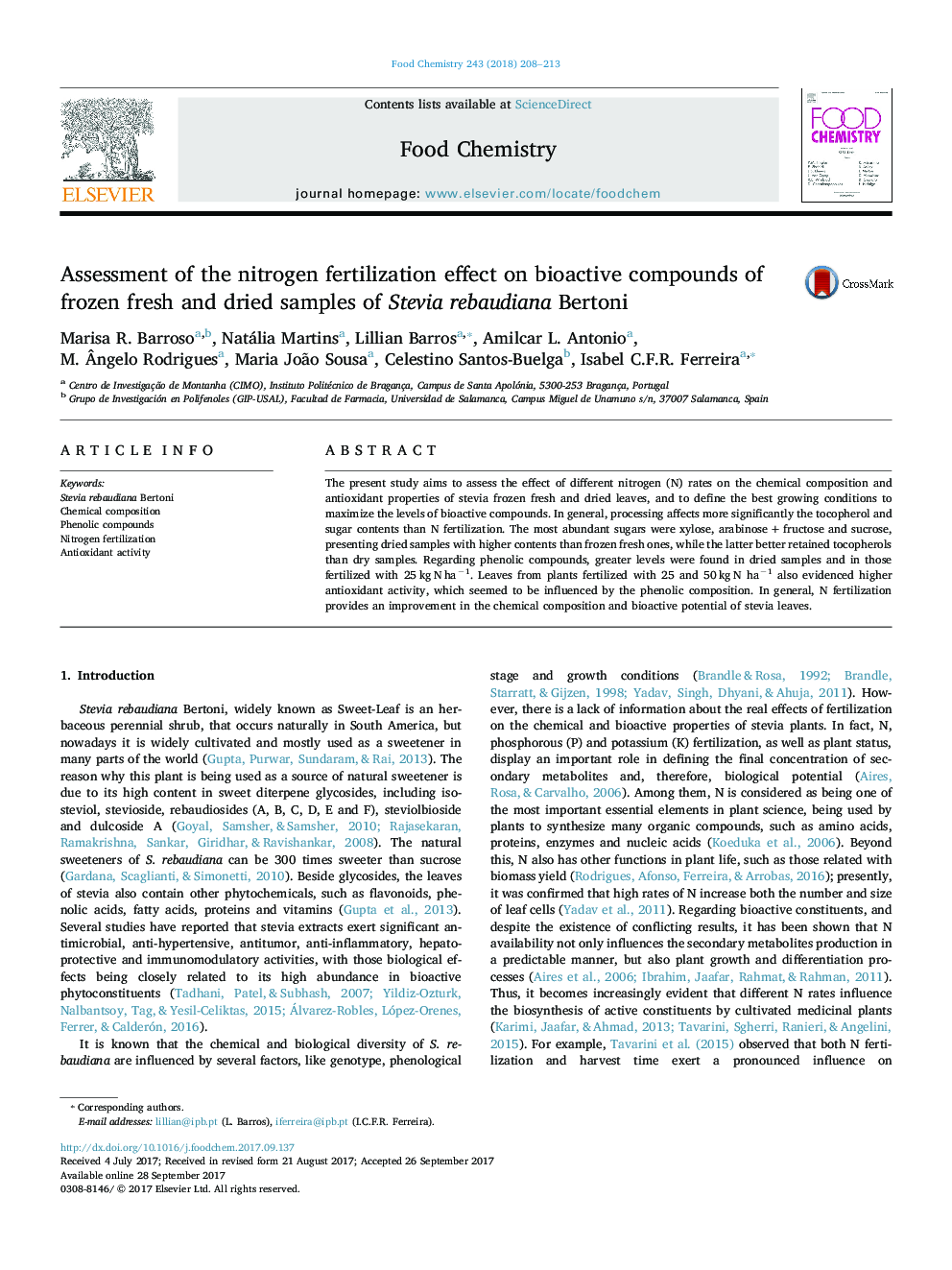| Article ID | Journal | Published Year | Pages | File Type |
|---|---|---|---|---|
| 5132548 | Food Chemistry | 2018 | 6 Pages |
â¢Phytochemicals composition determines Stevia rebaudiana biological effects.â¢Different N rates affect chemical composition and antioxidant potential.â¢Specific growing conditions helps to maximize bioactive compounds levels.â¢Drying process has a higher effect on tocopherols, sugars and polyphenol contents.â¢Antioxidant potential is correlated with the phenolic compounds content.
The present study aims to assess the effect of different nitrogen (N) rates on the chemical composition and antioxidant properties of stevia frozen fresh and dried leaves, and to define the best growing conditions to maximize the levels of bioactive compounds. In general, processing affects more significantly the tocopherol and sugar contents than N fertilization. The most abundant sugars were xylose, arabinoseâ¯+â¯fructose and sucrose, presenting dried samples with higher contents than frozen fresh ones, while the latter better retained tocopherols than dry samples. Regarding phenolic compounds, greater levels were found in dried samples and in those fertilized with 25â¯kgâ¯Nâ¯haâ1. Leaves from plants fertilized with 25 and 50â¯kgâ¯N haâ1 also evidenced higher antioxidant activity, which seemed to be influenced by the phenolic composition. In general, N fertilization provides an improvement in the chemical composition and bioactive potential of stevia leaves.
